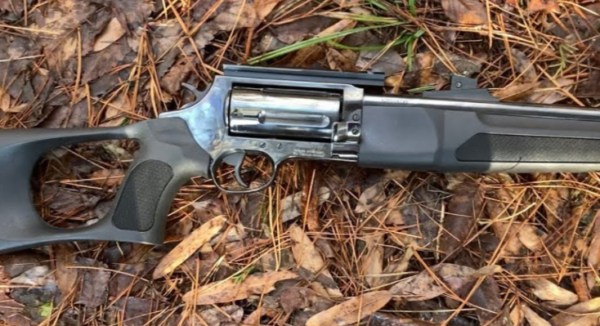Welcome to our comprehensive guide on Tisas 1911 problems and their solutions!
This timeless, reliable firearm is a favorite among enthusiasts, but like any mechanical device, it can occasionally present challenges.
Don’t worry, though – many of these issues are common and easily fixable.

In this article, we’ve gathered 15 of the most prevalent Tisas 1911 issues and provided step-by-step solutions to get your beloved firearm back to its best.
Tisas 1911 Problems


1. Problematic Extractor
Cause
The problematic extractor in the Tisas 1911 can often be attributed to manufacturing inconsistencies.
Extractors might not have the correct tension or could be roughly finished, leading to unreliable casing extraction and frequent malfunctions.
Solution
A potential solution involves replacing the problematic extractor with a high-quality, well-fitted variant.
Special attention should be paid to ensure proper tension and smooth finishing.
Moreover, routine maintenance and cleaning can also play a vital role in keeping the extractor functioning optimally.
2. Firing Pin Issues
Cause
The firing pin is a crucial component of the Tisas 1911, responsible for initiating the ignition of the propellant.
Common causes of firing pin issues could be due to accumulated dirt and grime, weakened or broken springs, or even a worn-out pin.
These factors may hinder the pin’s movement and impact its striking power, leading to misfires or failure to fire.
Solution
Regular cleaning and maintenance of the firing pin and its channel can prevent the build-up of debris, ensuring smooth functioning.
Should the issue persist, inspect the firing pin spring, as it might need replacement.
If the pin itself shows signs of excessive wear or damage, it is advisable to consult a gunsmith or replace the firing pin altogether.


3. Misaligned Sights
Cause
Misaligned sights on a Tisas 1911 can be attributed to a variety of factors.
The most common cause is the rough handling of the firearm, which can knock the sights off their original position.
Additionally, prolonged use can result in wear and tear, leading to a shift in the sight’s alignment.
Solution
The solution to misaligned sights begins with a careful assessment to understand the degree of misalignment. This can be done using a sight adjustment tool or a gunsmith’s supervision.
After identifying the misalignment, minor adjustments can be made to the sights to realign them.
However, severe misalignment may necessitate professional gunsmith services to ensure precise and safe realignment.
4. Loose Grip Safety
Cause
A loose grip safety in a Tisas 1911 can occur due to frequent use or improper maintenance, causing an issue with the firearm’s firing mechanism.
This might lead to accidental discharges, posing a significant safety risk.
Solution
The solution involves either tightening the grip safety or replacing it entirely.
A gunsmith should inspect the firearm to check for any additional issues. Regular cleaning and maintenance can prevent this problem from resurfacing.
5. Defective Recoil Spring
Cause
The recoil spring is a critical component of the Tisas 1911 that absorbs the recoil force when the gun is fired.
A defective recoil spring can lead to various operational problems, including misfeeds, failure to eject spent casings, and in severe cases, damage to the firearm itself.
This defect can be due to the spring’s natural wear and tear, inappropriate usage, or poor maintenance.
Solution
The solution to a defective recoil spring is relatively straightforward – replacement.
It’s recommended to opt for a high-quality spring from a reputable manufacturer to ensure optimal performance and longevity.
Regular inspection and maintenance, coupled with proper firearm handling, can significantly reduce the risk of recoil spring defects in the future.
6. Jamming or Failure to Feed
Cause
Jamming or failure to feed in the Tisas 1911 model can commonly be attributed to a few significant factors.
These factors may include a damaged magazine, poorly manufactured ammunition, or inadequate cleaning and maintenance of the firearm.
The problem might occur when a round does not seat properly in the chamber, causing the firearm to jam.
Solution
To resolve the issue of jamming or failure to feed, start by inspecting the magazine for any signs of damage or wear.
If the magazine appears to be faulty, replacing it may solve the problem.
For ammunition-related issues, ensure you are using high-quality ammunition.
Regular, thorough cleaning of the firearm can also prevent any build-up that may interfere with the feeding process.
If the problem persists, consider seeking professional help for a detailed inspection and repair.
7. Ejection Problems
Cause
Ejection problems in Tisas 1911 typically stem from worn or damaged extractor tension.
The extractor, a crucial component in removing spent casings, may lose its grip on the casing if not properly tensioned, leading to a failure in ejecting the spent round.
Solution
The most effective solution for ejection issues is to adjust or replace the extractor.
A gunsmith can accurately diagnose if the tension is the issue and, if necessary, replace the extractor with a new one.
Regular maintenance, including proper cleaning and lubrication, can also prevent such problems from arising.
8. Inferior Barrel Quality
Cause
The issue of inferior barrel quality in Tisas 1911 largely stems from the use of subpar materials in the manufacturing process.
Notably, the metal used lacks the necessary strength and durability expected in a high-quality firearm, leading to rapid wear and tear and impacting the gun’s accuracy over time.
Solution
To resolve this issue, the manufacturer needs to invest in higher-grade materials that can withstand the rigors of repeated firing.
This would mean using a harder, more durable metal for the barrel, ensuring its longevity and maintaining the gun’s accuracy.
Additionally, comprehensive quality checks should be implemented to ensure that every barrel meets the required standard before it leaves the factory.
9. Inconsistent Trigger Pull
Cause
The cause of an inconsistent trigger pull in a Tisas 1911 could stem from several issues.
It might be due to a weak or worn-out trigger spring, a misaligned sear, and hammer, or even accumulated debris and dirt within the trigger assembly.
Regular usage, lack of maintenance, or poor handling can contribute to these problems, resulting in variability in trigger pull weight and length.
Solution
The solution to rectify an inconsistent trigger pull primarily involves a thorough cleaning and inspection of the firearm.
Disassemble the trigger assembly and carefully clean each part, removing any dirt or grime.
Examine the trigger spring for any signs of wear or weakness and consider replacing it if necessary.
If the issues persist, it may be advisable to consult with a professional gunsmith for a comprehensive diagnosis and repair.
Always remember, regular maintenance and proper handling are key to preventing many common firearm issues.
10 .Loose Magazine Release
Cause
A loose magazine release in Tisas 1911 firearms can often be attributed to the extensive usage of the firearm or manufacturing inconsistencies.
Heavy or repetitive use can lead to the gradual loosening of the magazine release button.
Alternatively, occasional production inconsistencies might result in a less secure fitting of the button, leading to an early onset of the issue.
Solution
To address a loose magazine release, a detailed inspection and tightening of the magazine release button should be carried out by a qualified gunsmith.
Replacement with a new button may also be necessary in some cases.
It is important to note that any modifications should be performed with caution to avoid impairing the functionality of the firearm.
11. Slide Stop Issues
Cause
The slide-stop issues with the Tisas 1911 are typically caused by a combination of factors.
These may include the inadequate fit of the slide stop in its channel, excessive wear, and tear, or even incorrect assembly of the firearm.
Sometimes, it might also be a result of a weak or damaged slide stop spring.
Solution
Resolving slide-stop issues begins with a thorough examination of the firearm. If the slide stop doesn’t fit correctly, it may need to be replaced or refitted.
In cases of excessive wear, replacing the worn parts is often the most effective solution.
If incorrect assembly is the issue, disassembling and correctly reassembling the firearm can rectify the problem.
Lastly, if the slide stop spring is weak or damaged, replacing it with a new one should solve the issue.
Always remember, proper firearm maintenance and handling are key to preventing such issues.
12. Issues with Hammer Fall
Cause
The problem of hammer fall in Tisas 1911 typically stems from an issue with the sear spring.
If the sear spring is not providing sufficient tension, it could cause the hammer to fall unexpectedly.
This can cause misfires and potentially pose a safety risk.
Solution
The most reliable solution to this problem is to replace or adjust the sear spring in your Tisas 1911.
If you’re comfortable with firearms maintenance, you can perform this task yourself. However, if you’re unsure, it’s recommended to seek the assistance of a qualified gunsmith.
Regular maintenance checks can prevent such issues from occurring in the first place.
13. Inadequate Plunger Tube
Cause
The issue of an inadequate plunger tube in Tisas 1911 can be attributed to several factors.
The most common among these is the factory installation. Oftentimes, the plunger tube is not adequately staked, causing loosening and eventual failure during operation.
This problem could be exacerbated by continuous rapid firing, which generates heat and vibration, further straining the plunger tube.
Solution
To rectify an inadequate plunger tube, replacement with a higher quality piece is the most viable solution. The new plunger tube should be carefully staked into place to ensure a secure fit.
It is also advisable to have this procedure done by a professional gunsmith to guarantee correct installation and alignment.
If done properly, this solution can significantly improve the reliability and lifespan of the Tisas 1911.
14. Mainspring Housing Problems
Cause
The mainspring housing is a crucial component in a Tisas 1911 pistol, responsible for the tension that allows the hammer to function correctly.
Problems can arise when this piece is incorrectly installed or when it becomes worn down due to extensive use.
This wear and tear can result in misfires, a jammed firearm, or even the gun failing to fire entirely.
Solution
To solve issues with the mainspring housing, first perform a careful inspection to identify any visible signs of damage.
If the component is worn or incorrectly installed, replacement or reinstallation may be necessary.
It’s always recommended to consult with a professional gunsmith or seek expert help when dealing with firearm repairs, to ensure safety and proper functioning of your Tisas 1911.
15. Faulty Safety Lock
Cause
The safety lock in a Tisas 1911 can become faulty due to regular wear and tear, poor maintenance, or a manufacturing defect.
Repeated use, or exposure to harsh conditions, can lead to the weakening or damage of the safety lock’s mechanism, hindering its function and potentially making the firearm unsafe.
Solution
Fixing a faulty safety lock involves identifying the cause of the problem. If it’s worn or damaged due to usage, replacing the safety lock with a new part might solve the issue.
In the case of a manufacturing defect, it would be advisable to contact Tisas for a replacement or professional repair.
Regular cleaning and maintenance of the firearm can prevent such issues from arising in the future.
Conclusion
While the Tisas 1911 does exhibit certain issues, it remains an affordable and reliable firearm for many enthusiasts.
The most common problems, such as occasional jamming or stiffness of the mechanism, can typically be resolved with regular cleaning and maintenance.
Additionally, some users might experience issues with specific types of ammunition, which is a common phenomenon across many firearm models and can be mitigated by testing different brands and types.
Despite these minor drawbacks, the Tisas 1911 stands as a testament to the enduring design of the classic 1911, providing a balance of cost-effectiveness with performance.
FAQs
Are Tisas 1911s reliable?
Yes, Tisas 1911s are generally reliable firearms. They are known for their durability, precision, and quality craftsmanship, providing consistent performance over time.
Who makes the Tisas 1911 pistol?
Tisas 1911 pistols are manufactured by Tisas Trabzon Arms Industry Corp, a reputable firearms manufacturer based in Turkey. Known for their quality workmanship and affordability, Tisas has gained recognition globally in the firearms industry.
Why 1911 is still the best?
The 1911 model stands out due to its timeless design, known for its accuracy, durability, and easy maintenance.
Its continued preference is also attributed to the exceptional ergonomics and the crisp single-action trigger, which contributes to improved precision.
Is Tisas 1911 +P rated?
Tisas 1911 is not formally rated for +P ammunition by the manufacturer.
Therefore, using +P ammo in these firearms is not recommended as it could potentially lead to mechanical issues or reduce the lifespan of the firearm.


Biographical Info: Waseem1001, Owner of My Guns Geek
Name: Waseem1001
Email: wwwfffwww117@gmail.com
Mailing Address: Cooker Insider, 4773 Sigley Road, White Cloud, KS 66094
About Waseem1001
Welcome to My Guns Geek, your gateway to the world of firearms and everything related. Meet the person who is passionate about firearms, gear, and the responsible ownership of guns. Waseem1001, the owner of My Guns Geek, is here to provide you with a wealth of information and insights.
A Lifelong Fascination
Waseem1001’s fascination with firearms and outdoor gear began at an early age. Whether it was admiring the craftsmanship of firearms or exploring the utility of outdoor equipment, the world of guns and gear always held a special place in his heart. This deep-rooted passion eventually led to the creation of My Guns Geek.
Our Mission
At My Guns Geek, our mission is to empower gun enthusiasts and outdoor enthusiasts with accurate and comprehensive knowledge.
Waseem1001 values your feedback, questions, and suggestions. Your engagement and contributions are vital in shaping the future of My Guns Geek.
Thank you for being a part of the My Guns Geek community, and Waseem1001 looks forward to sharing this exciting journey with you.


